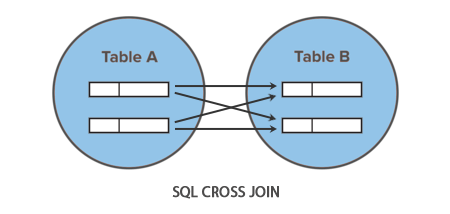Understanding Cross Joins in SQL
In the realm of SQL (Structured Query Language), mastering various types of joins is essential for effective database management and data manipulation. Joins facilitate the merging of rows from two or more tables based on a related column. Among these joins—like inner joins, left joins, and right joins—one of the less common yet intriguing options is the cross join. This article explores what cross joins are, their purpose, and how they can be applied effectively in SQL queries.
What is a Cross Join?
A cross join, also known as a Cartesian join, is a join operation that yields the Cartesian product of the two tables involved. This means it pairs each row from the first table with every row from the second table. If the first table has rows and the second table has rows, the resulting cross join will contain rows. Unlike other joins, a cross join does not require any condition to match columns between the tables; it simply combines all possible pairs of rows.
Purpose and Use Cases of Cross Joins
While cross joins can generate a large number of rows, which might be impractical for extensive datasets, they serve specific purposes in SQL queries. One common use case is generating all potential combinations of two sets of data. For instance, if you have tables listing products and stores, a cross join can produce a comprehensive list of all product-store combinations. Another scenario where cross joins excel is in creating exhaustive test datasets that necessitate complete pairs of records to simulate diverse conditions.
Implementing Cross Joins in SQL
Implementing a cross join in SQL is straightforward. You typically use the CROSS JOIN keyword between the two tables. For example, to pair every employee with every department in respective tables named employees and departments, your SQL query would resemble this:
This query will generate a result set where each employee is paired with each department, covering all possible combinations of the two tables. Given the potential for rapidly escalating row counts, exercise caution when employing cross joins, particularly with large datasets.
Practical Considerations and Performance
When utilizing cross joins, performance implications are critical to bear in mind. Because cross joins produce a Cartesian product, the resultant dataset can become exceedingly large if the source tables are substantial. This may lead to considerable performance degradation and prolonged query processing times. To mitigate these challenges, use cross joins sparingly, especially with sizable datasets. Additionally, optimize your database management system (DBMS) to handle increased computational loads, and consider indexing frequently used columns to enhance query performance.
Advanced Applications of Cross Joins
Beyond fundamental applications, cross joins prove invaluable in more advanced scenarios. They find application in data science and analytics for generating diverse combinations of variables or scenarios. In fields like machine learning, cross joins assist in creating comprehensive feature sets, facilitating thorough analyses of variable interactions. Similarly, in financial modeling, cross joins simulate diverse market conditions by pairing financial instruments and market factors, offering a holistic perspective on potential outcomes.
Avoiding Unintentional Cross Joins
An essential aspect of working with cross joins involves ensuring intentional usage. Unintentional cross joins can occur when join conditions are inadvertently omitted in queries involving multiple tables. This oversight triggers a Cartesian product, potentially overwhelming systems with massive result sets. To prevent such occurrences, meticulously verify join conditions and adhere closely to SQL syntax. Leveraging tools and best practices for query optimization, such as explicitly specifying join types or utilizing subqueries, aids in sidestepping accidental cross joins and maintaining efficient database operations.
Final Thoughts
Cross joins in SQL present a distinctive approach to combining data from multiple tables, generating exhaustive combinations of involved rows. While less commonly used and posing challenges with extensive datasets, comprehending their purpose and implementing them judiciously proves invaluable for specific tasks, such as crafting comprehensive test datasets or exploring all conceivable pairings within a dataset. By employing cross joins thoughtfully and assessing data scale, you can harness their potential effectively without compromising system performance. Armed with this understanding, you gain a potent tool to enrich your SQL repertoire for proficient database management.

Leave a Reply